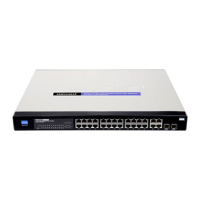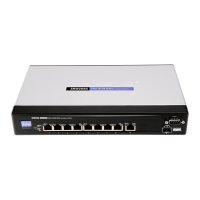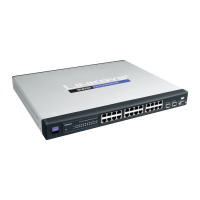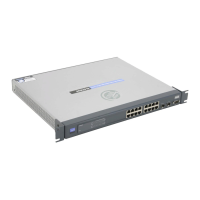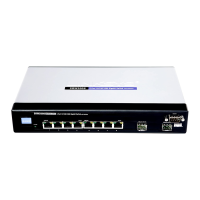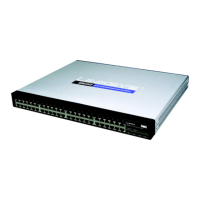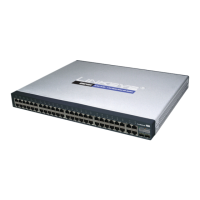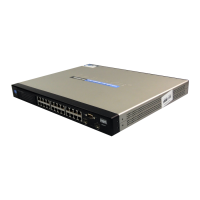50
Chapter 5: Configuring the Switch through the Web Utility
DiffServ
24-Port 10/100 + 2-Port Gigabit Switch with Webview and Power over Ethernet
DiffServ
The commands described in this section are used to configure Quality of Service (QoS) classification criteria and
service policies. Differentiated Services (DiffServ) provides policy-based management mechanisms used for
prioritizing network resources to meet the requirements of specific traffic types on a per hop basis. Each packet
is classified upon entry into the network based on access lists, IP Precedence, DSCP values, or VLAN lists. Using
access lists allows you select traffic based on Layer 2, Layer 3, or Layer 4 information contained in each packet.
Based on configured network policies, different kinds of traffic can be marked for different kinds of forwarding.
All switches or routers that access the Internet rely on class information to provide the same forwarding
treatment to packets in the same class. Class information can be assigned by end hosts, or switches or routers
along the path. Priority can then be assigned based on a general policy, or a detailed examination of the packet.
However, note that detailed examination of packets should take place close to the network edge so that core
switches and routers are not overloaded.
Switches and routers along the path can use class information to prioritize the resources allocated to different
traffic classes. The manner in which an individual device handles traffic in the DiffServ architecture is called per-
hop behavior. All devices along a path should be configured in a consistent manner to construct a consistent end-
to-end QoS solution.
The DiffServ tab includes links to the following screens.
• DiffServ Class Map
• DiffServ Policy Map
• DiffServ Service Policy

